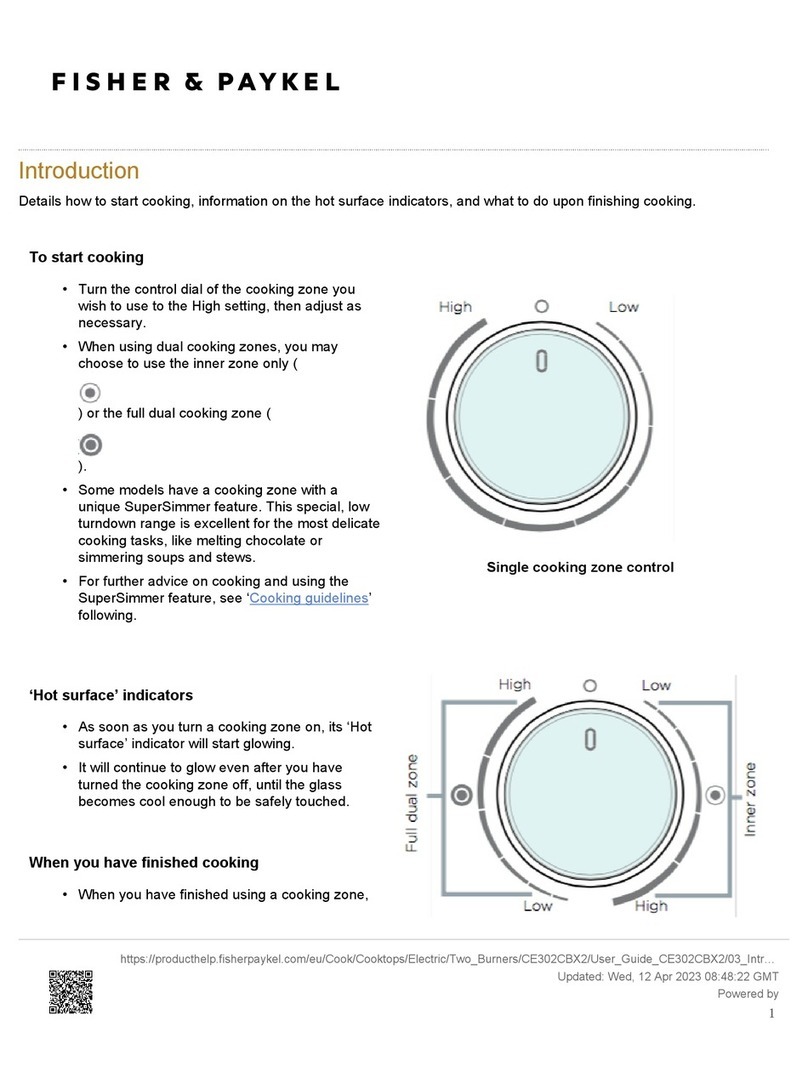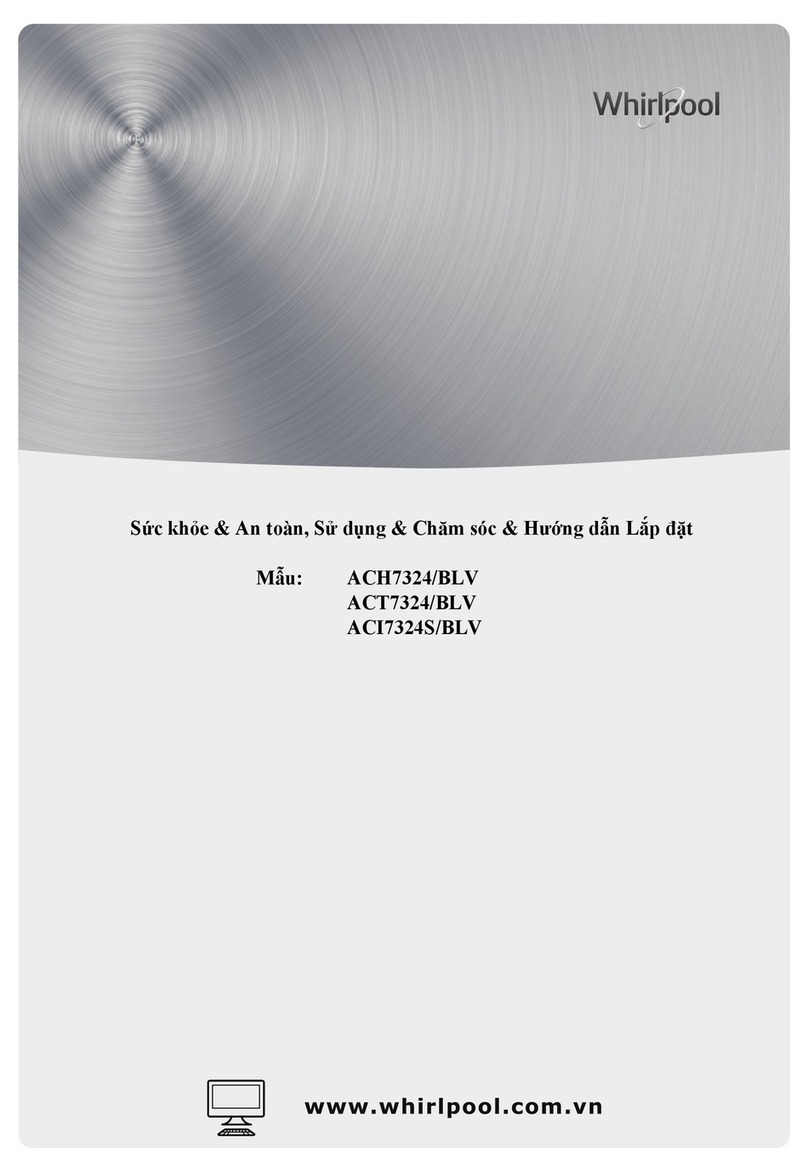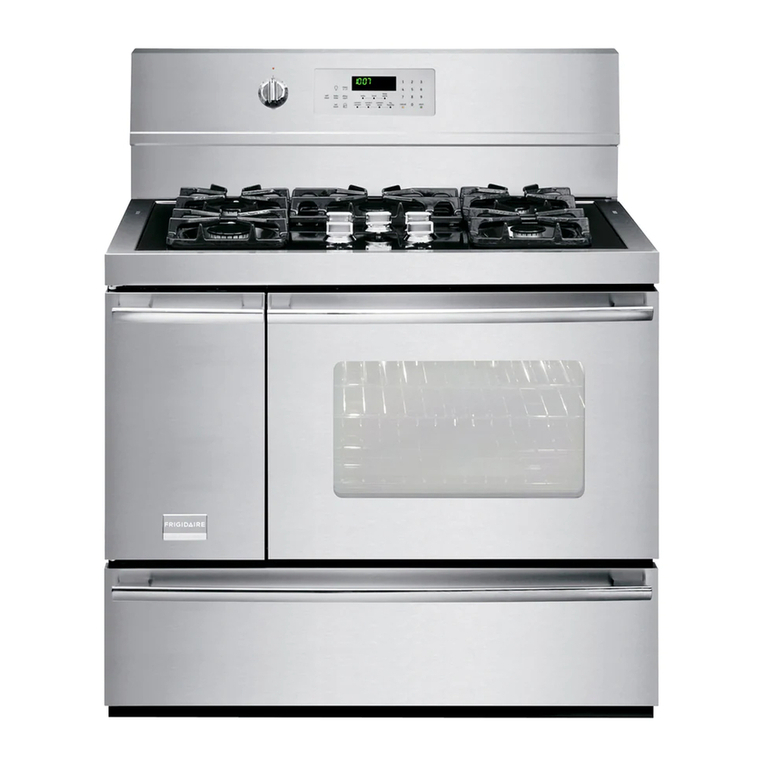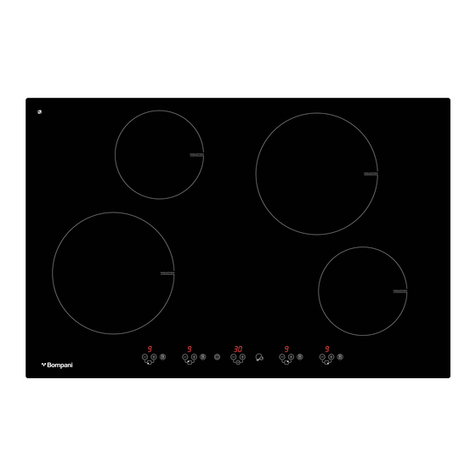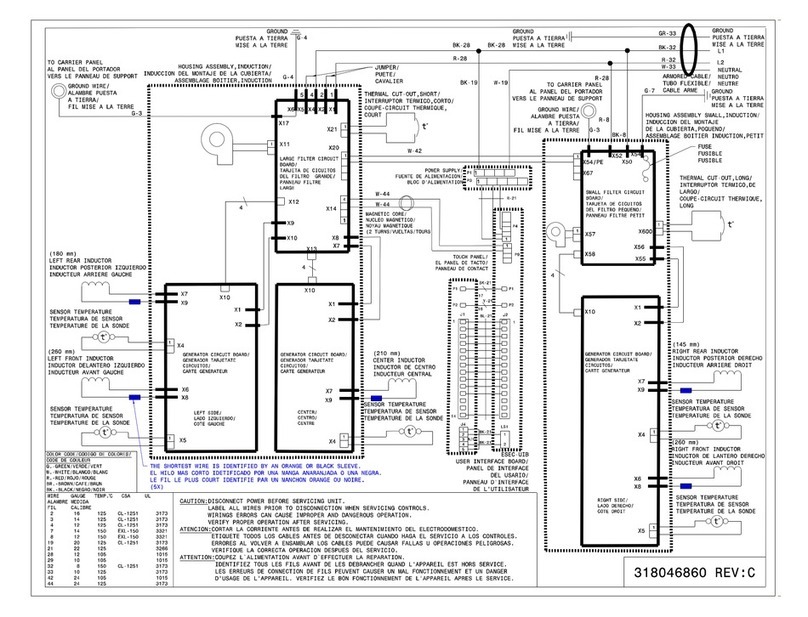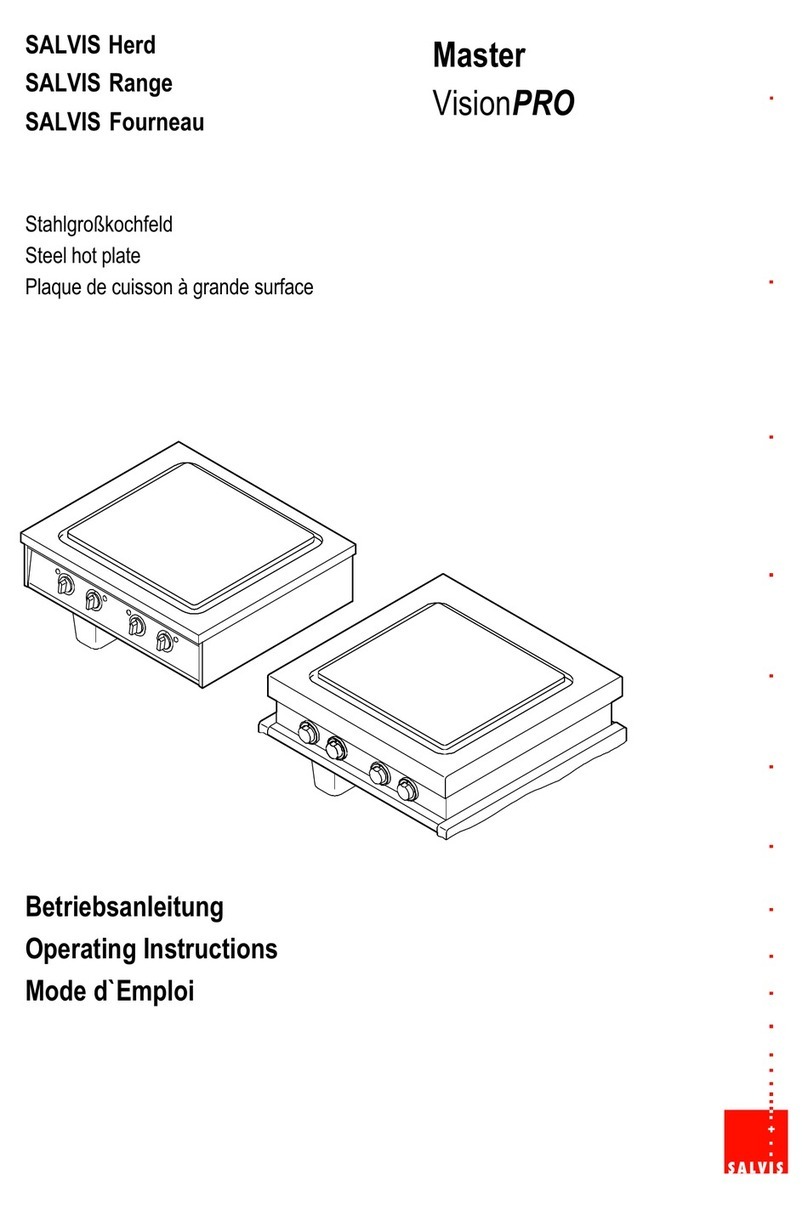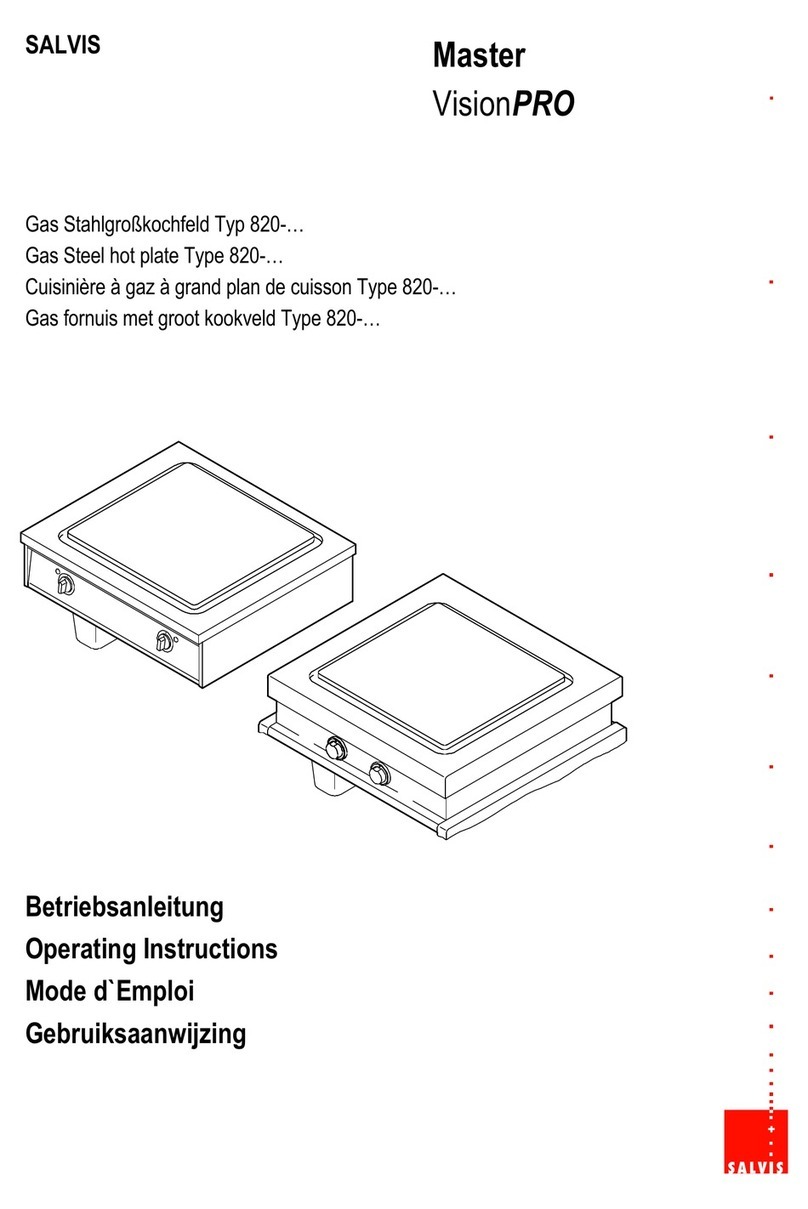24
7.4 Safety information for the operator /
operating personnel
Any risks from electric power must be eliminated. The
cooking induction unit shall only be used if the installati-
on of the electricity is fitted by an approved installation
contractor in accordance with specific national and local
regulations.
- The heating area is warmed up from the heat of the
pan. To avoid injuries (burning) do not touch the
heating area.
- To avoid overheating of pans by means of evaporating
the contents, don’t heat up pans unattended.
- Switch the control knob off if you take the pan away for
a while. This will avoid having the heating process
continue automatically when a pan is placed back on
the heating area. So, if any person starts to use the
cooker, he/she will have to start the heating process by
turning the control knob in the ON-position.
- Do not insert any piece of paper, cardboard, cloth, etc.
between the pan and the heating area, as this might
initiate a fire.
- As metallic objects are heated up very quickly when
placed on the operating heating area, do not place any
other objects (closed cans, aluminium foil, cutlery,
jewelry, watches etc.) on the induction cooker. Persons
with a pacemaker should consult their doctor whether
they are safe near an induction cooker or not.
- Do not place credit cards, phone cards, cassette tapes,
or other objects that are sensitive to magnetism on the
Ceran plate or in the ceramic bowl.
- The induction cooker has an internal air-cooling
system. Do not obstruct the air inlet- and air outlet-slots
with objects (cloth). This would cause overheating and
therefore the cooker would switch off.
- Avoid liquid entering into the cooker. Do not let water or
food overflow the pan. Do not clean the cooker with a
jet of water.
- If the heating area (Ceran plate) is cracked or broken,
the induction cooker must be switched off and
disconnected from the electric connection. Don’t touch
any parts inside the cooker.
7.5 Inappropriated operating methods
The operating reliability of the cookers can only be
guaranteed with proper use.
The limit values must be observed as per technical data.
7.6 Unauthorized reconstruction and use
of spare parts
Reconstruction of the cooker or changes to the cooker
are not allowed. Contact the manufacturer if you intend
to make any changes on the cooker. To guarantee the
safety, just use genuine spare parts and accessories
authorized by the manufacturer. The use of other
components voids all warranties.
7.7 Pan detection
Pans having a diameter smaller than 12cm are not
detected. During pan detection, the indicator operation
flashes. No power is transferred and the indicator lamp
flashes if no pan is detected.
7.8 Control of the heating area
The heating area is controlled with a temperature
sensor. Overheated pans (hot oil, empty pans) can be
detected. Energy transfer will be stopped. The induction
unit must be re-started after it has cooled down.
8. Out of operation
If the cooker is out of operation make sure that the
control knob is in the OFF position. If you don’t use the
cooker for a longer period (several days) unplug the unit.
Make sure that no liquid can enter into the cooker.
Don’t clean the cooker with a jet of water.
9. Fault finding / Rectification
CAUTION: Do not open the cooker,
dangerous electric voltage inside.
The cookers may only be opened by authorized service
personnel.
Stop any actions if the heating area (Ceran plate) is
cracked or broken, the induction cooker must be swit-
ched off and disconnected from the electric supply. Don’t
touch any parts inside the cooker.
Error messages
Number of flashing signals
1) Wrong pan material
2) The appliance can only be switched on, after resetting
the switch to 0 and the cooking zone is cooled down.
3) The induction unit continues working but the
temperature of the cooking platform is not controlled
anymore
Order of error message: The indicator lamp flashes for
an interval of 0,6 sec. The number of the following short
flashes has to be counted and informs about the kind of
error corresponding to the above mentioned code
system. Additionally the red ERROR indicating lamp is
on.
Code Signification
-- No fault, normal operation
01 No coil current, Hardware overcurrent
02 High coil current, Software overcurrent 1)
03 Temperature cooling plage
04 Temperature cooking platform,
overheating
2)
05 Power rotary switch line break
06 Raised inside temperature
07 Sensing element of cooking platform,
short circuit
3)
